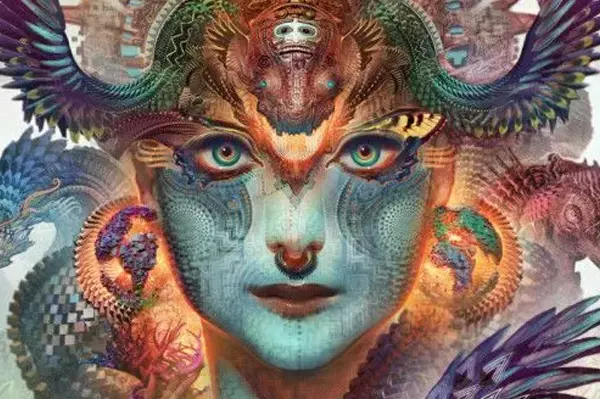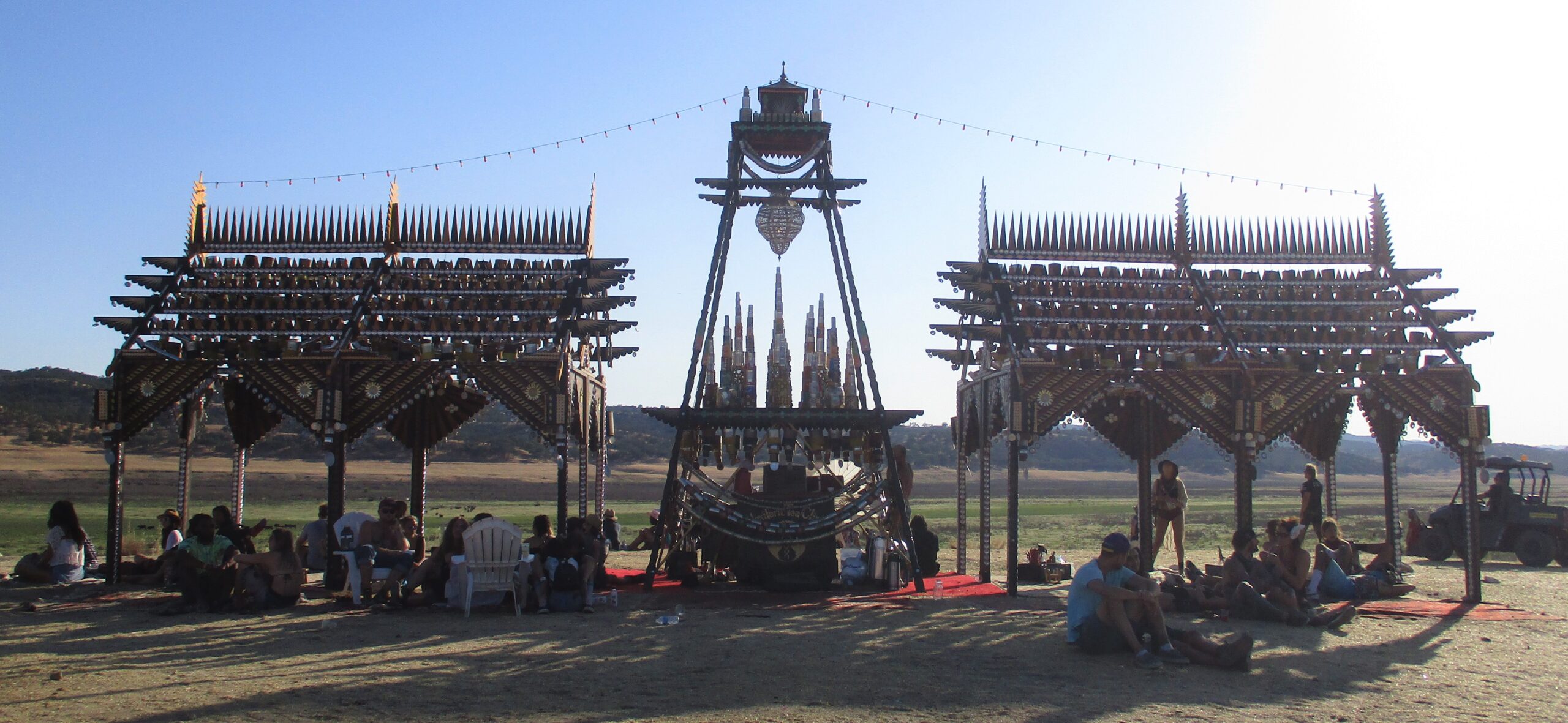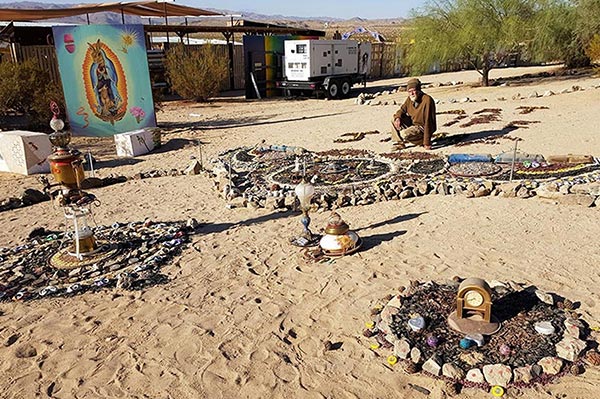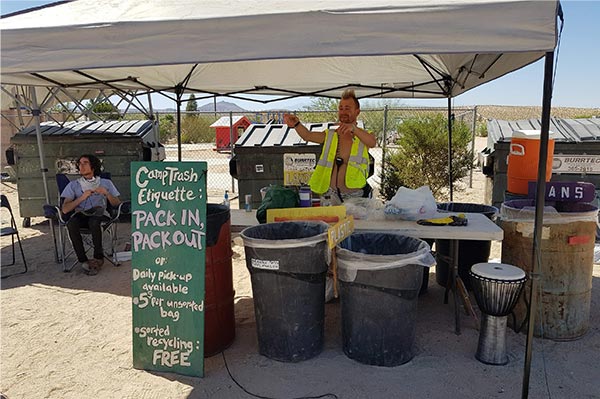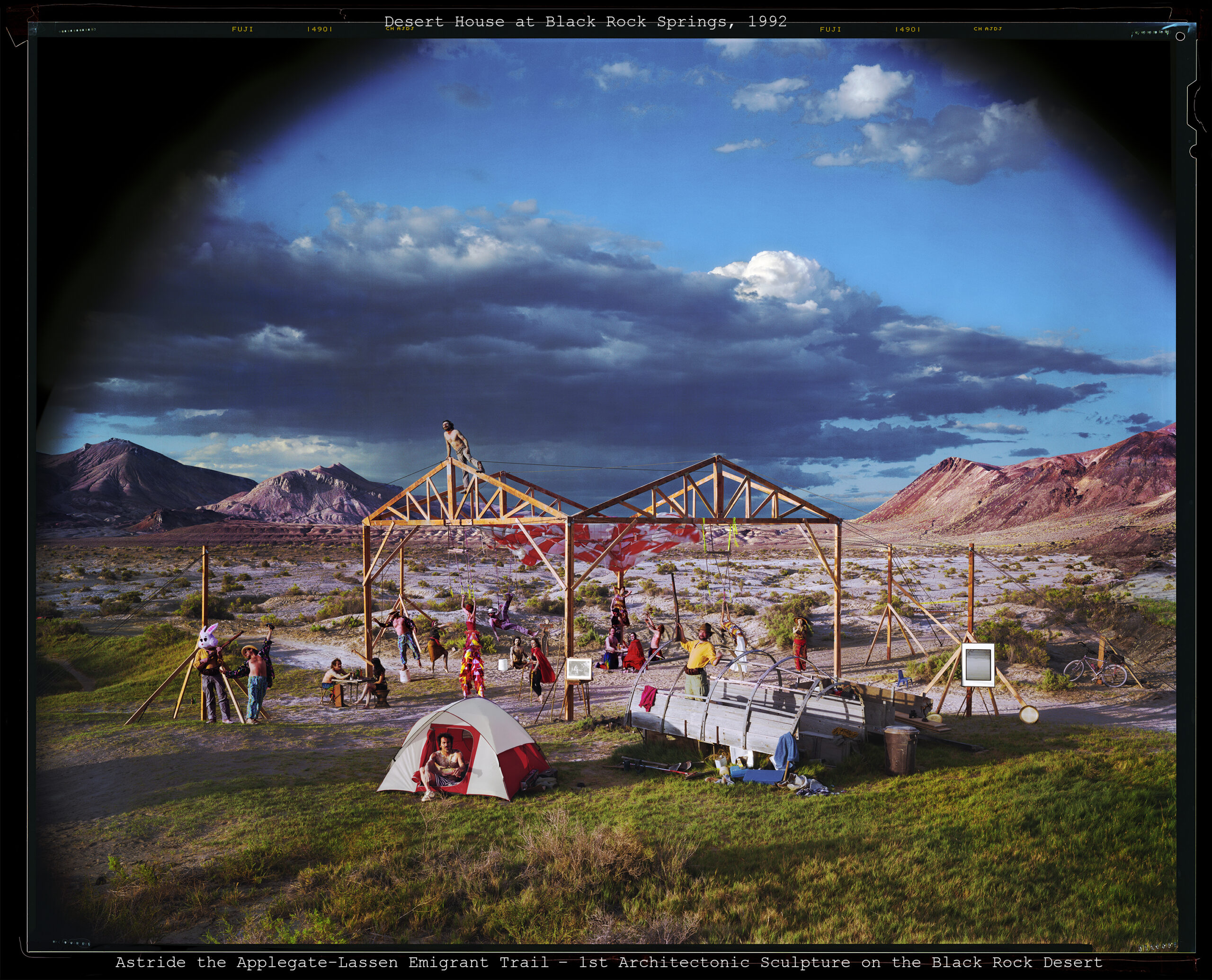This is a collection of interviews I gathered between 2016 and 2018 at Transformational Festivals along the West Coast. These festivals were vibrant hubs of creativity, showcasing visionary artists like Android Jones and upcycling artists such as Shrine and MoonDragon. They also celebrated the efforts of the dedicated “green team” known as the Trash Pirates.
During this time, I worked with the Department of Public Works (DPW), the builders of Burning Man. I collected stories from DPW members, which led to the creation of a 200-page anthropology project, DPWStorybook.com. While in Gerlach, I also met local figures like Dan Deveny, who helped manage Doobie’s 500+ inscribed stones along the Guru’s Road. His interview, which describes the Guru’s Road, is included here.
A section also features key figures from the early history of Burning Man, including Larry Harvey, William Binzen, John Law, and Flash. (To be completed soon.)
My name is Flo—Flore Muguet, and I live in Paris, France. As an anthropologist, I am inspired by art, ritual, and cultural transformation. The NeoAnthropology project grew naturally from my encounters with extraordinary people and subcultures.
INTERVIEWS
Android Jones
Renowned digital and visionary artist Android Jones explores the profound connections between art, technology, human consciousness, and psychedelic experiences. For Android Jones, creativity is a living, conscious force—an intelligence that links us to something far greater than ourselves. Drawing from his immersive work at transformational festivals, he actively seeks to “hack the human consciousness.” Visionary art, unlike traditional forms, often draws heavily on the influence of psychedelic experiences, amplifying a sense of wonder and limitless possibilities.
Android Jones also reflects on the dual nature of the festival scene. While these events provide opportunities for profound transformation, freedom, and community, they also reveal darker aspects, such as drug abuse, sexual exploitation, the objectification of women, and the misappropriation of cultures. Despite these challenges, he sees festivals as simulations of freedom that inspire the exploration and expression of human potential.
This interview was conducted by “Flo”, Flore Muguet, a French anthropologist, in 2016 at the Lightning in a Bottle Festival (LIB) in California, USA. Most of Flo’s questions have been omitted to improve the reading flow.
Shrine On
Shrine is an extraordinary upcycling artist celebrated for his innovative approach to creating art from discarded materials. Rejecting the term “transformational festival,” he prefers to describe such events as “inspirational festivals” or simply “parties,” emphasizing inspiration over a heavy-handed notion of transformation.
Deeply intertwined with his life, Shrine’s work challenges consumerism by transforming trash into stunning, meaningful art.
His journey, shaped by personal challenges and transformative experiences—such as leading the Temple project at Burning Man in 2008—reflects his unwavering belief in the power of creativity and inspiration. With a punk rock aesthetic and a critical stance against the commercialization of spirituality, Shrine continues to inspire others to find joy, education, and purpose in reusing and redefining the world around them.
This interview was conducted by “Flo”, Flore Muguet, a French anthropologist, in 2016 at the Lightning in a Bottle Festival (LIB) in California, USA. Most of Flo’s questions have been omitted to improve the reading flow.
Robert MoonDragon
Robert Moondragon is a multi-media installation artist known for his use of society’s “trash” to make shrines, mandalas, sculptures, and jewelry. Using his art to promote upcycling, Robert’s work has been regularly featured at Joshua Tree Music Festival. His unique style and generosity make him one of the most notable installation artists to date.
This interview was conducted by “Flo,” Flore Muguet, a French anthropologist, in 2017. Most of Flo’s questions have been omitted to improve the reading flow
Trash Pirates
The Trash Pirates are a dynamic and ever-growing “Green Team” that emerged from the West Coast festival scene in the United States. This team of waste management enthusiasts, dedicated to sorting and recycling, is driven by a strong work ethic and a passion for sustainability. Known for their engaging and educational approach to waste reduction, the Trash Pirates actively promote upcycling and sustainable practices at festivals across the region. Beyond managing waste, they bring a unique, youthful, and fun vibe, making them a standout group in the festival circuit. Join them in their mission to create a greener world and learn more about their efforts on their Facebook page.
This interview was conducted by “Flo”, Flore Muguet, a French anthropologist, in 2017. Most of Flo’s questions have been omitted to improve the reading flow.
GERLACH’S GURU ROAD
Dooby’s Lane, also known as Guru’s Road, is a unique artistic pathway in Gerlach, Nevada, created by DeWayne “Dooby” Williams (1918-1995) starting in 1978. It features over 500 inscribed stones and several impressive art installations, including Ground Zero, Elvis, and the Imagination Station-Desert Broadcasting System. Standing as a testament to creativity, community, and local history, Dooby’s works celebrate local Gerlach residents while offering profound reflections on society, politics, religion, economics, and media. The project was brought to life with invaluable support from his trusted friend and assistant, Dan Deveny (born in 1950), who played a crucial role in its creation and ongoing preservation.
Dan Deveny

